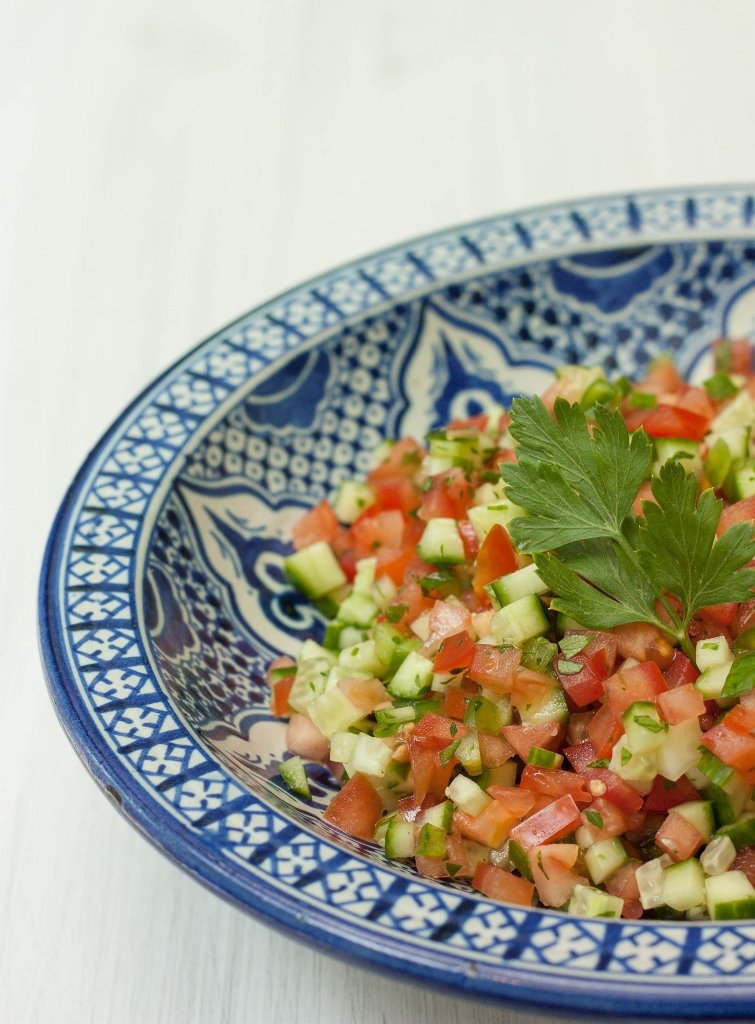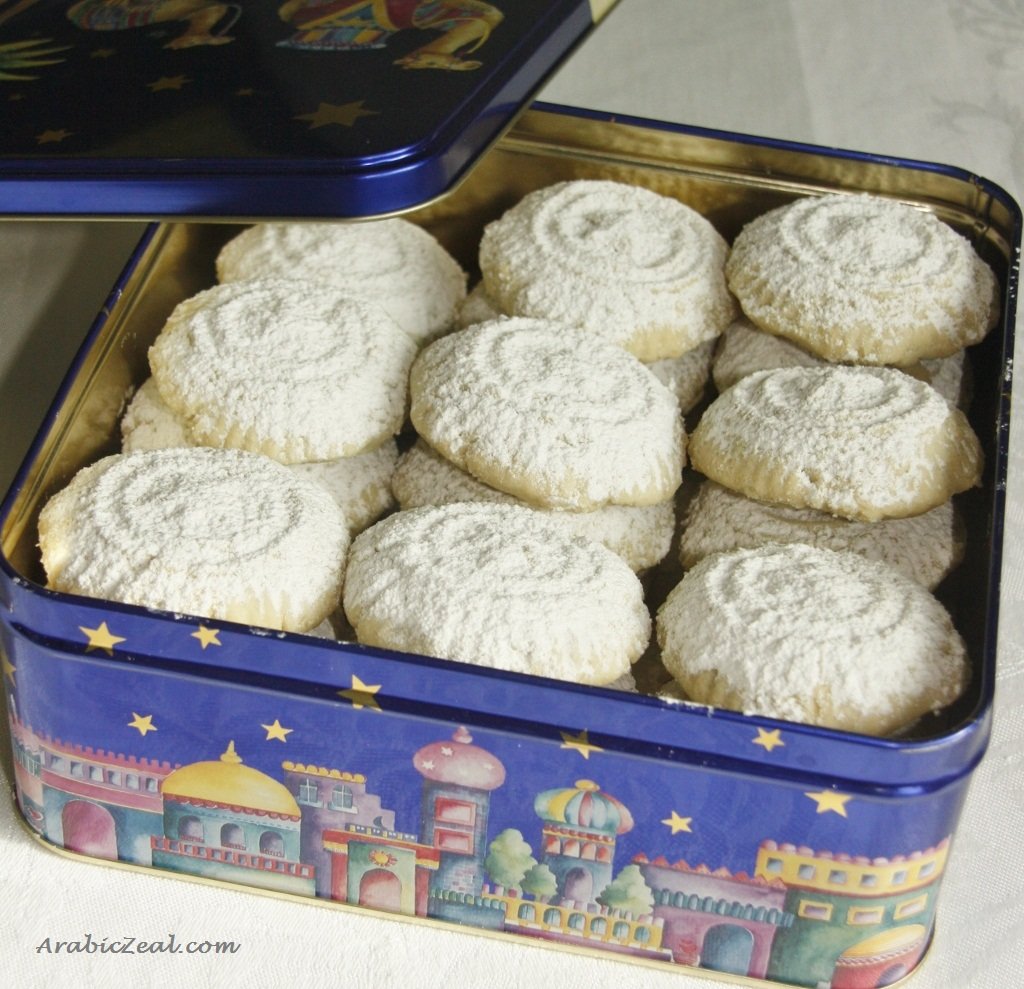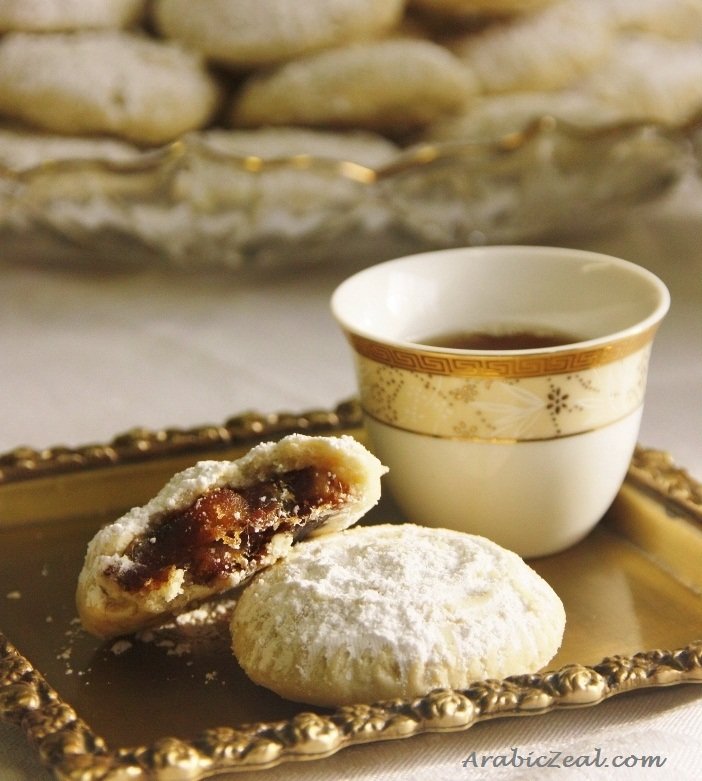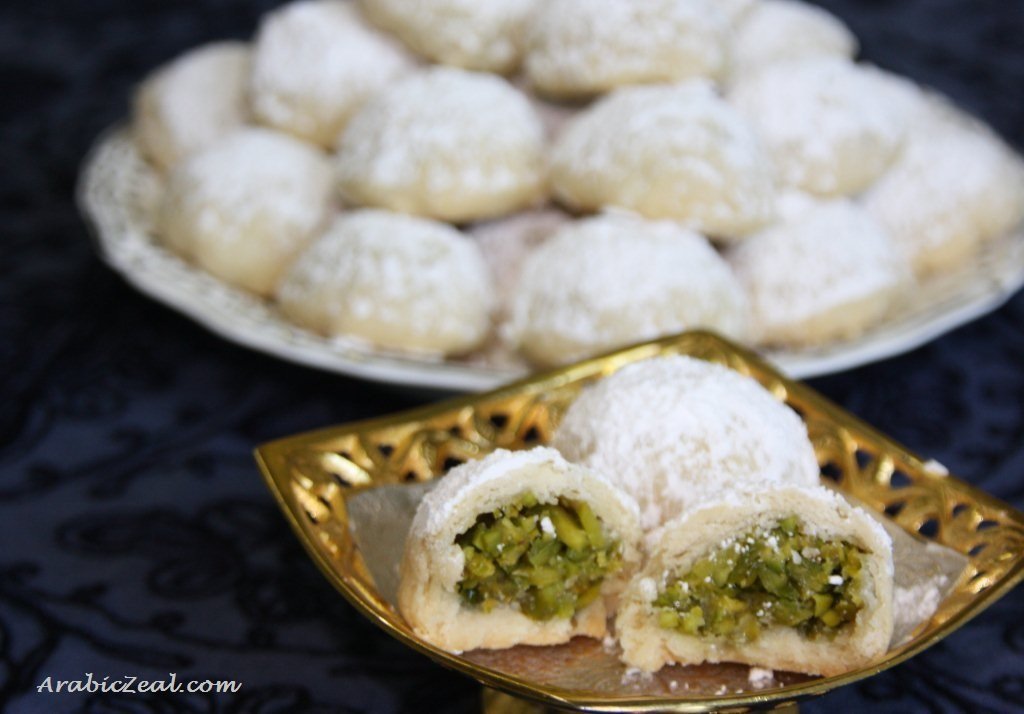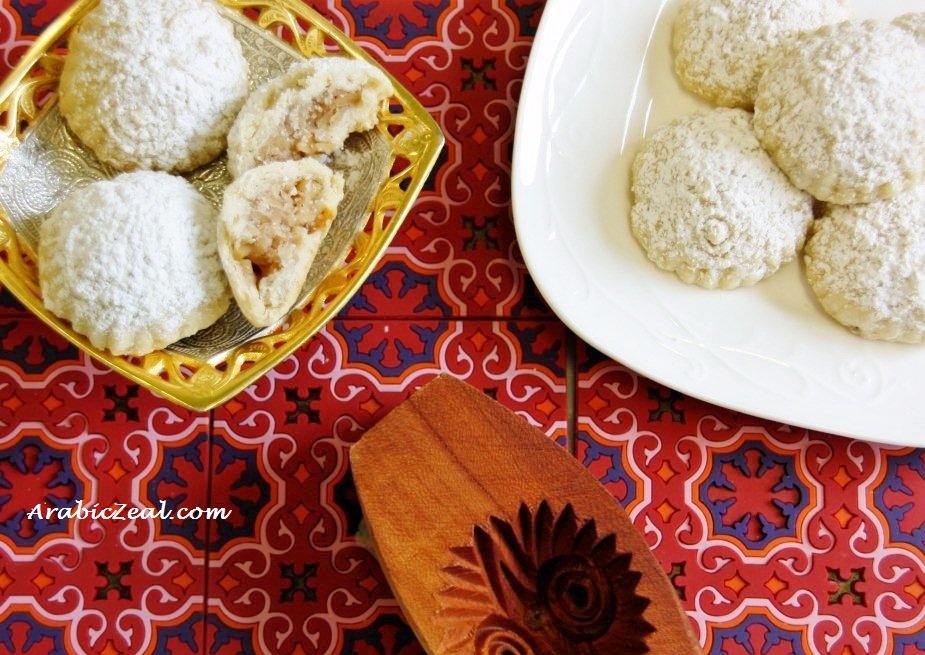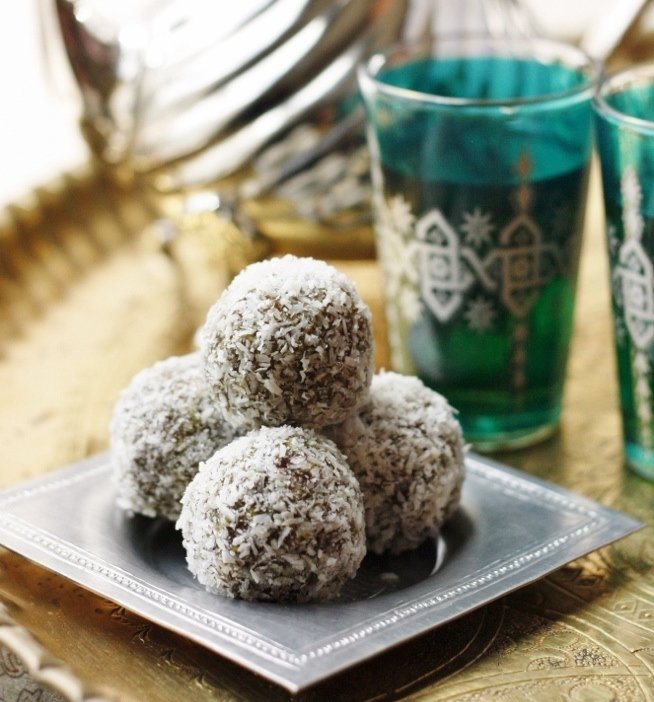Simple Arabic Salad
This is my go-to salad to serve alongside any Middle Eastern rice dish, such as maqluba (rice and chicken) or mujaddara (rice and lentils). Indeed, this salad is simple, but there are some tricks to it.
In the Arab world, it is highly desired to have salads like this chopped teeny tiny. Regardless of how tiny one is willing to go, it’s equally important to have the cucumber and tomato pieces all uniform. The optional green pepper can be chopped even finer, as it’s more of an accent rather than the main event.
As for seasonings, a high-quality gourmet sea salt can really make this salad pop. Also, avoid overdoing it with the lemon juice; otherwise, the salad will be soupy. The mint leaves are optional.
Arabic Salad ~ serves 4-6 as a side dish
3 medium tomatoes, chopped small
2 medium cucumbers, chopped small (not peeled)
½ bunch fresh parsley, chopped finely
1 Tablespoon fresh lemon juice
½ teaspoon sea salt, or to taste
½ green pepper, chopped finely (optional)
handful mint leaves, chopped finely (optional)
Method
- Mix all the ingredients together. Check for a balance of red and green. If necessary, add more tomatoes or more of the green stuff.
- Taste and adjust the seasonings if necessary. I like to add a final sprinkle of sea salt.
Question: How do you make your Arabic Salad?
